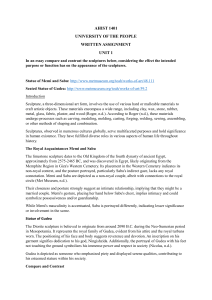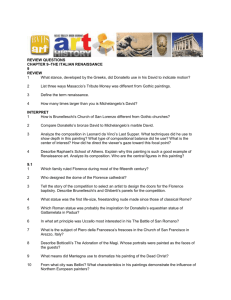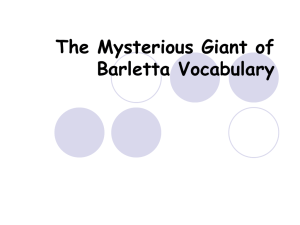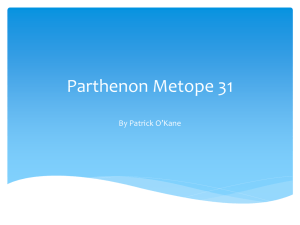Statue of Memi and Sabu.
advertisement
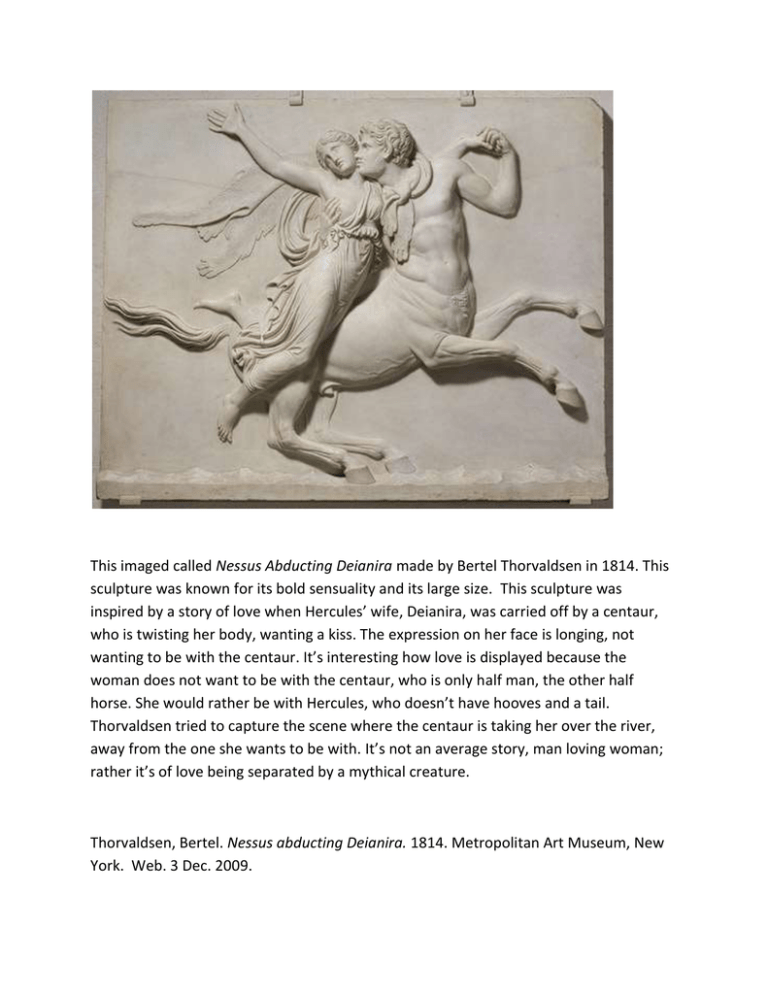
This imaged called Nessus Abducting Deianira made by Bertel Thorvaldsen in 1814. This sculpture was known for its bold sensuality and its large size. This sculpture was inspired by a story of love when Hercules’ wife, Deianira, was carried off by a centaur, who is twisting her body, wanting a kiss. The expression on her face is longing, not wanting to be with the centaur. It’s interesting how love is displayed because the woman does not want to be with the centaur, who is only half man, the other half horse. She would rather be with Hercules, who doesn’t have hooves and a tail. Thorvaldsen tried to capture the scene where the centaur is taking her over the river, away from the one she wants to be with. It’s not an average story, man loving woman; rather it’s of love being separated by a mythical creature. Thorvaldsen, Bertel. Nessus abducting Deianira. 1814. Metropolitan Art Museum, New York. Web. 3 Dec. 2009. This painting called Paradise under the Sea is Aoki Shigeru’s most famous painting. He painted it in 1907, right around the time when Western Culture was influencing Japanese art. I think this painting supports my thesis, and that artworks of love do have a story behind them. The legend is said that Price Fire-fade visited the Palace of the God of the Sea and then fell in love with his daughter. I think the painting shows the gender roles of the male and female. Two women are standing below him like servants, while they offer Price Fire-fade objects from a jar while he sits atop a tree above them. Shigeru also incorporated a sense of holiness, where the price has a crown of leaves and light is shining down on his head. I also think this painting supports my thesis that when loved is portrayed, it isn’t always done in the normal way. This story is of a man of fire who falls in love with a woman under the sea. Fire and water are two elements that work against each other, not for each other. One cancel’s the other out, but both are equally powerful. One of the reasons this painting is his most famous is being he went beyond the normal step to create this piece of art. Shigeru dove down into the sea to explore the effect of light and color under water. Shigeru, Aoki. Paradise Under the Sea. 1907. Art Beyond the West. By Michael O’Riley. Asheville : Calmann & King Ltd, 2002. 201. Print. This is an ancient Egyptian status called Statue of Memi and Sabu. This statue made of limestone was created in the Old Kingdom (Dynasty 4). This is called a pair statue, which is usually of husband and wife. Memi and Sabu were known as the Royal Acquaintances, but it is not known if they were husband and wife. Pair statues made for the dead, and that it was thought that the deceased souls would go to their statue as a home and would gain food and gifts that rested in their tombs. The pose of Memi is very strange because he doesn’t have a masculine look besides the height, and so Memi and Sabu almost look the same. It’s almost like the gender roles are equal in the sense, because there is no sense of true power over one another. Another interesting point is when we think of love we think of people embracing and looking like they are in love. Memi and Sabu in the statue are very aligned with each other, but they don’t look in love with each other. There’s a possibility that back in Egyptian times, marriages weren’t for love, but for power or money instead. Statue of Memi and Sabu. Old Kingdom Dynasty 4. Art Museum, New York. Web. 7 Dec. 2009. Women artists in the 1950s through the 1960s had been excluded from art history and knew no other professional artists from the times before them. Books were published, but none contained a single name of a female artist. Mary Beth Edelson made the poster titled Some Living American Women Artists/Last Supper in honor of living women artists who deserved to be recognized. All the women in the poster had a love for art and Mary Beth Edelson had a love for women’s rights, and making sure women were recognized during that time.
